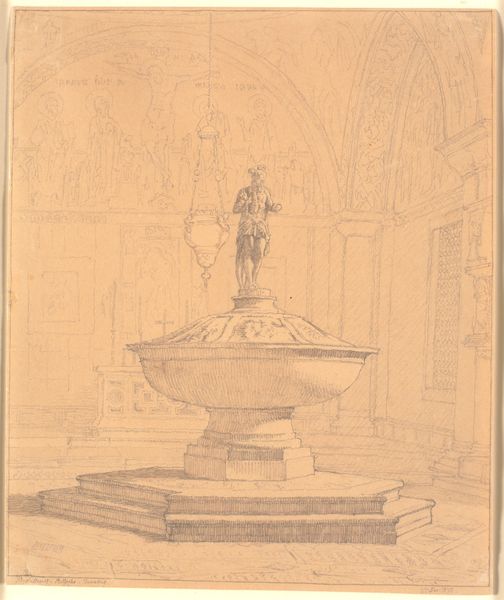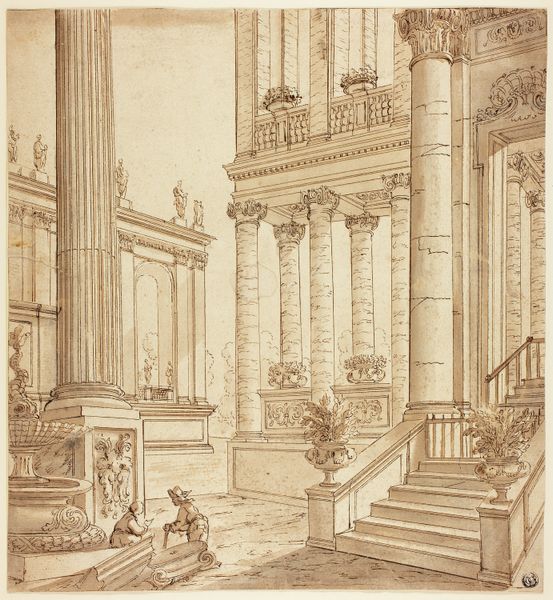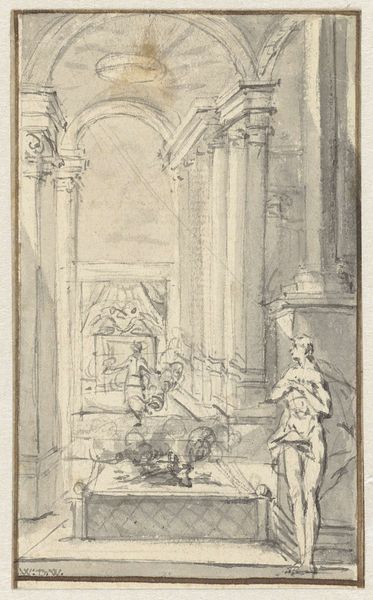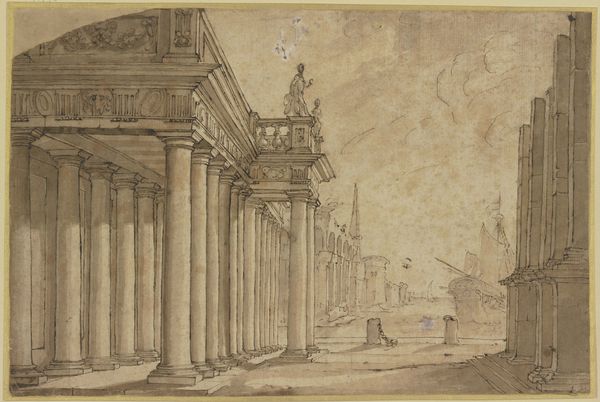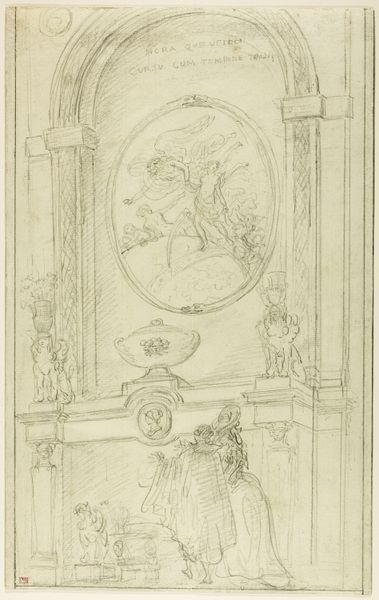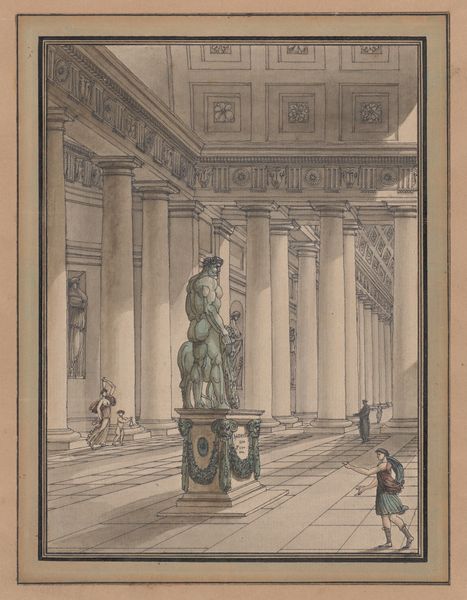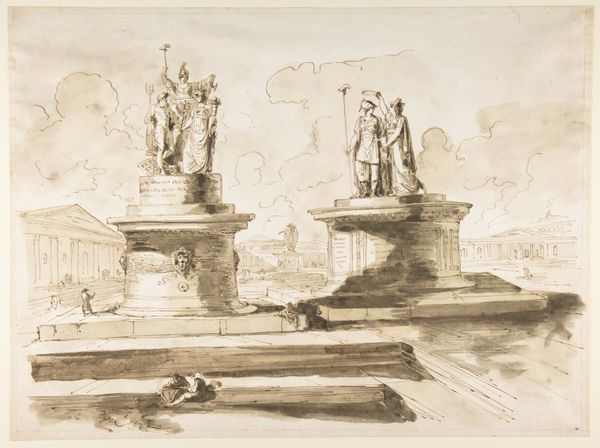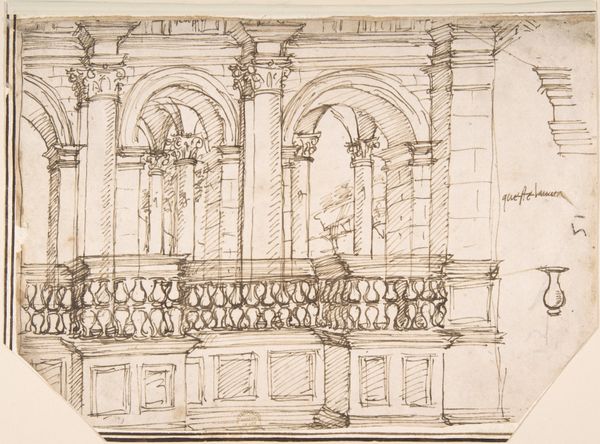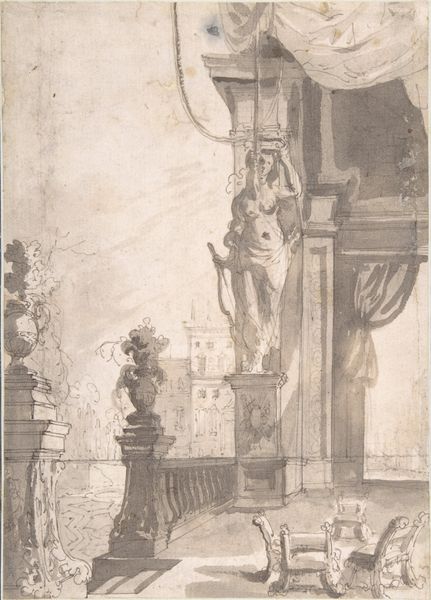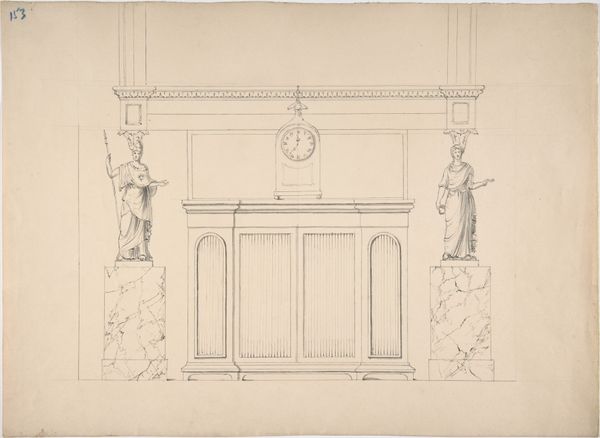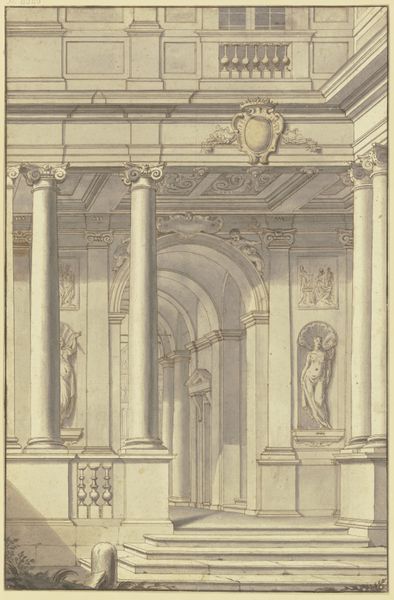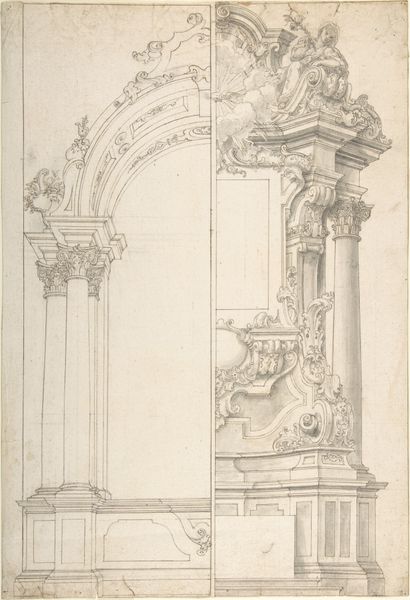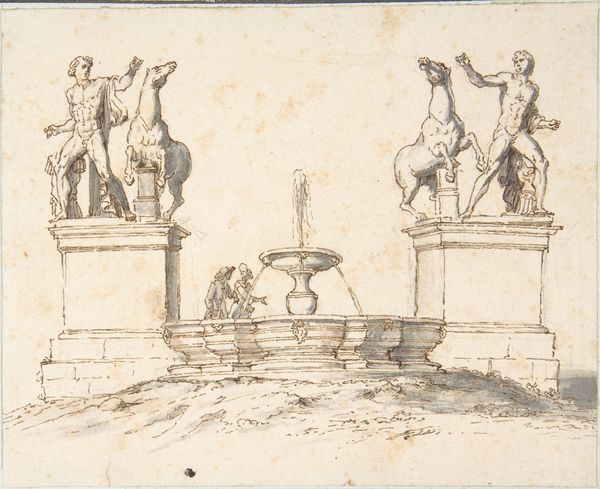
drawing, pencil, architecture
#
drawing
#
etching
#
romanticism
#
pencil
#
architectural drawing
#
cityscape
#
italian-renaissance
#
architecture
Dimensions: 240 mm (height) x 310 mm (width) (bladmaal)
Curator: This is Martinus Rørbye’s 1834 pencil drawing, "Trappen til Loggia de' Lanzi, Firenze," currently housed at the SMK. The architectural sketch beautifully captures a bustling Italian cityscape. Editor: The atmospheric quality is undeniable. The stark contrasts create a wonderful depth. The way he captures the light washing over the stone feels distinctly romantic. Curator: It is interesting how Rørbye renders this celebrated example of Italian Renaissance architecture, given that Denmark has relatively little stone. Note how meticulously the drawing is rendered. We also have examples of Rørbye using etching as a printmaking method; this aesthetic might speak to that familiarity. Editor: The materiality of the work contributes so much to the viewing experience; its visual language draws attention to the city’s sculptural elements. The imposing lions particularly. Curator: And these lions certainly had significance. The Loggia became a showcase of Florentine political power through sculptural display. Rørbye witnessed a city proud of its artistic heritage; that comes across here. The very act of sketching here implicates Rørbye within a cultural landscape of artistic production and consumption. Editor: Looking closer, the architectural rendering invites careful visual inspection; each precise line captures form but also guides our understanding. I notice the linear perspective flattens in a few areas, creating fascinating visual puzzles. Curator: Precisely! The constraints and possibilities of materials always inform artistic output. One might consider the type of paper available to the artist as part of this process, even the pencils employed would influence mark making, thereby influencing our own perception. Editor: Reflecting on the interplay between the forms, this piece demonstrates an exceptional talent for harmonizing detail. Curator: For me, seeing it is considering Rørbye’s world – the raw materials, the social function of creating such a piece, and the mechanisms behind it. It provides an excellent entry point.
Comments
No comments
Be the first to comment and join the conversation on the ultimate creative platform.
